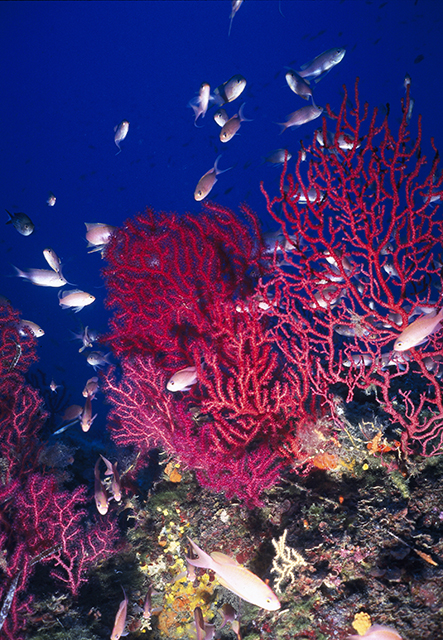
Around 50 meters deep, the red fans of a Paramuricea clavata host a biodiversity hotspot.
Far beyond the edge of our land-bound world lie areas beyond national jurisdiction, commonly known as the high seas. For most people, for most of history, the high seas have been invisible, populated by the imagination with monstrous fish, wrathful gods or precipitous plummets into the immensity of space. over centuries of exploration by adventurers, hunters, traders and scientists, that imagined realm of fear and danger has been exploited, mapped and probed, yielding up secrets and banishing terrors.
The high seas form a vast global commons that covers 61% of the area of the ocean and 73% of its volume. They encompass an astonishing 43% of the Earth’s surface and occupy 70% of the living space on our planet, including land and sea. These international waters are home to a stunning wealth of marine life and ecosystems, and by virtue of their enormous expanse, are essential to the healthy functioning of Planet Earth. But in recent decades that life has dwindled under the rising impact of multiple human stresses, prompting an historic effort by the United Nations to increase protection and reform management.
Scientists are calling for full protection of 30% of the ocean by 2030, a call endorsed by a resolution of the IUCN’s World Conservation Congress in 2016. A successful outcome of negotiations at the UN Intergovernmental Conference is essential for the designation, effective management and enforcement of a network of high seas protected areas.
